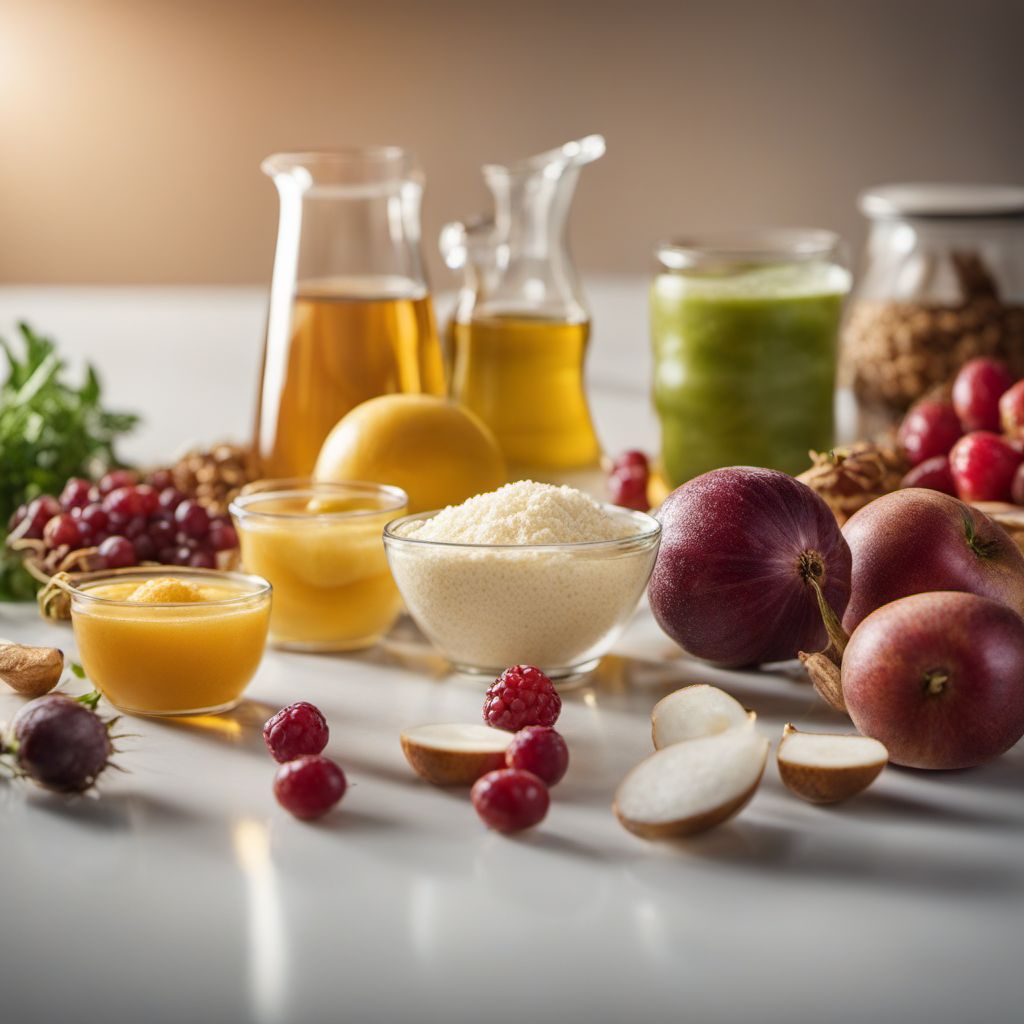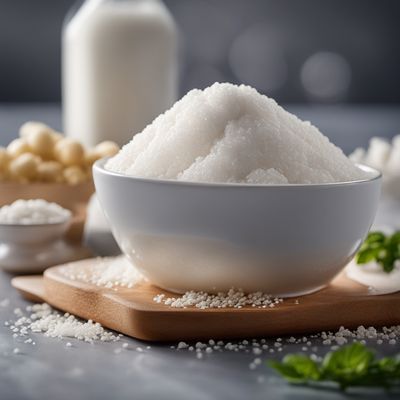
Ingredient
Acidity regulator
The Balancing Act: Understanding Acidity Regulators
Acidity regulators are food additives that help control and balance the acidity levels in various dishes. They come in different forms, such as citric acid, tartaric acid, or vinegar, and are used to enhance flavors, preserve food, and adjust pH levels. These additives are commonly found in processed foods, beverages, and condiments.
Origins and history
The concept of using acidity regulators dates back centuries, with ancient civilizations like the Romans and Egyptians utilizing natural sources of acidity, such as vinegar and citrus fruits, to preserve food and enhance flavors. Over time, the development of food science led to the creation of synthetic acidity regulators, providing a wider range of options for culinary applications. Today, acidity regulators are widely used in the food industry to maintain product consistency and improve taste.
Nutritional information
Acidity regulators are not a significant source of nutrients, but they can enhance the taste and texture of food. They are typically low in calories and fat, making them a suitable choice for those watching their weight or following a low-fat diet.
Allergens
Acidity regulators are generally safe for consumption, but some individuals may be sensitive or allergic to specific additives. It is essential to read food labels carefully and consult with a healthcare professional if you have any concerns or known allergies.
How to select
When selecting acidity regulators, opt for reputable brands and check for proper labeling and certifications. Look for additives that are free from contaminants and meet food safety standards. Additionally, consider the specific requirements of your recipe to choose the most suitable acidity regulator for your culinary needs.
Storage recommendations
To maintain the freshness and quality of acidity regulators, store them in a cool, dry place away from direct sunlight. Ensure the containers are tightly sealed to prevent moisture absorption or contamination. Follow the recommended storage instructions provided by the manufacturer.
How to produce
Producing acidity regulators at home is not practical, as they involve complex chemical processes. It is best to rely on commercially available options that have undergone rigorous testing and quality control measures.
Preparation tips
When using acidity regulators, start with small amounts and gradually adjust to achieve the desired level of acidity. Remember to taste as you go, as different dishes may require varying degrees of acidity. Experiment with different types of acidity regulators to discover unique flavor combinations.
Culinary uses
Acidity regulators are widely used in the food industry to enhance the taste of various products, including beverages, sauces, dressings, and canned goods. They are also commonly used in baking to activate leavening agents and improve the texture of baked goods.
Availability
Acidity regulators are readily available in grocery stores, supermarkets, and online retailers worldwide. They are a staple in the food industry and can be found in a wide range of processed foods and culinary products.
More ingredients from this category » Browse all

Anti-foaming agent
The Silent Hero: Taming the Bubbles in Your Culinary Creations

Propellent gas
The Power Behind the Spray: Unveiling the Secrets of Propellent Gas

Gelling agent
The Magic of Gelling Agents

Preservative
Preserving the Goodness: Unveiling the World of Food Preservatives

Binding agent
The Glue of Culinary Creations: Unveiling the Power of Binding Agents

Flavour enhancer
The Magic of Umami

Glazing agent
Enhancing Food Appeal

Modified starch
The Versatile Transformations of Starch

Antioxidant
"Nature's Defense: Unleashing the Power of Antioxidants"

Emulsifying salts
The Magic of Emulsifying Salts

Anti-caking agent
The Secret Ingredient: Unveiling the Magic of Anti-Caking Agents

Emulsifier
The Harmony Enhancer